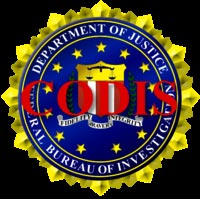Archival Notice
This is an archive page that is no longer being updated. It may contain outdated information and links may no longer function as originally intended.
Home | Glossary | Resources | Help | Contact Us | Course Map
There are some limitations of the CODIS. For example:
- Not all convicted offenders go through the corrections facilities where most DNA samples are collected. Some are released on "time served" or parole straight from the courtroom (thereby delaying the entry of their profile into the CODIS).
- Sometimes convicted offenders, whose DNA should be collected, analyzed and entered into the CODIS, are missed.
- Laboratories have casework and offender backlogs, which delay entry of samples into the CODIS. This may affect the timeliness in which results are available.
- Some offender samples and casework backlogs restrict the use of the CODIS to solve non-suspect cases. Many laboratories and police agencies have regulations for submission of evidence for DNA analysis. If agencies cannot submit non-suspect DNA evidence, they will not be able to maximize the value of the CODIS.
Additional Online Courses
- What Every First Responding Officer Should Know About DNA Evidence
- Collecting DNA Evidence at Property Crime Scenes
- DNA – A Prosecutor’s Practice Notebook
- Crime Scene and DNA Basics
- Laboratory Safety Programs
- DNA Amplification
- Population Genetics and Statistics
- Non-STR DNA Markers: SNPs, Y-STRs, LCN and mtDNA
- Firearms Examiner Training
- Forensic DNA Education for Law Enforcement Decisionmakers
- What Every Investigator and Evidence Technician Should Know About DNA Evidence
- Principles of Forensic DNA for Officers of the Court
- Law 101: Legal Guide for the Forensic Expert
- Laboratory Orientation and Testing of Body Fluids and Tissues
- DNA Extraction and Quantitation
- STR Data Analysis and Interpretation
- Communication Skills, Report Writing, and Courtroom Testimony
- Español for Law Enforcement
- Amplified DNA Product Separation for Forensic Analysts


